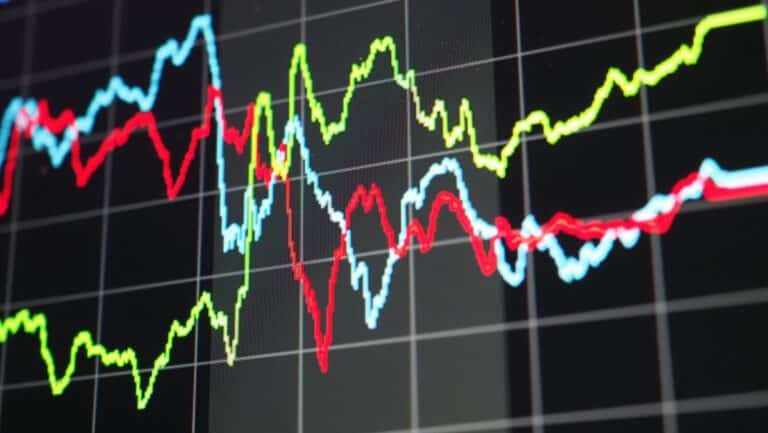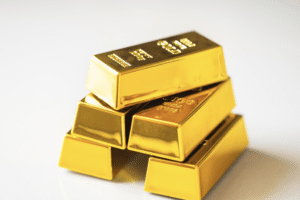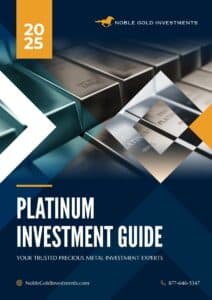In 2023, the gold market is experiencing a new gold rush as prices soar to extraordinary heights. With expert forecasts predicting record highs throughout the year, more investors are beginning to move more assets into precious metals.
Keep reading for factors driving the rise in gold prices, the impact on the markets, the risks and challenges associated with investing in gold, and effective investment strategies to take advantage of this golden opportunity.
Understanding The Surge In Gold Prices
Experts attribute the rise in gold prices to a number of factors, including inflation fears, geopolitical tensions, and economic uncertainty.
Factors Driving The Surge In Gold Prices
Numerous factors are contributing to the sudden rise in the price of gold, making it an increasingly attractive investment for investors looking to diversify their portfolios. Some of these driving forces include:
- Supply and demand dynamics: with global gold demand up 18% in 2022, the rapidly growing market has led to higher prices for this precious metal.
- Interest rate fluctuations: Interest rate changes can affect gold’s price, with lower interest rates often sparking interest in alternative investments like gold.
- Currency Valuations: The value of the U.S. dollar and other currencies can also play an important role in determining the price of gold, especially if investors are seeking protection against currency devaluation or inflation risks.
- Geopolitical Tensions: Conflicts and uncertainties around the world can cause investors to flock to safe-haven assets like gold, driving up its value.
- Inflation fears: Rising inflation is a key factor driving investors to gold to preserve their wealth amid economic uncertainty.
- Market speculation: Goldman Sachs analysts forecast a sharp rise in gold prices in 2023, which could spark investor interest and further accelerate price increases.
By understanding these factors, investors can make informed decisions on whether investing in gold is a suitable strategy for preserving and growing their wealth during times of economic volatility and uncertainty.
Expert Predictions For 2023
Many reputable analysts and financial institutions are predicting a significant upswing in the price of gold in 2023, with some estimates as high as $2,100 per ounce. Among these estimated forecasters, Goldman Sachs, a leading investment bank, has also predicted an impressive rise in the value of this precious metal in the coming year.
During times of heightened economic uncertainty or volatility, such as those experienced during the 2023 gold rush, investors often take refuge in safe-haven assets like gold. As demand for this finite resource increases due to its inherent ability to maintain its value over time, experts believe we can expect higher highs and higher lows for the gold price in 2023.
Historical Trends And Patterns
The historical trends and patterns of gold’s price have shown that it has a remarkable ability to act as a safe haven in times of economic uncertainty or turmoil. A prime example is the 2008 financial crisis, when investors flocked to gold, leading to a steady rise in the gold price that peaked at $1,900 per ounce in 2011.
Analysis of historical data also reveals notable milestones, such as the fact that the inflation-adjusted gold price peaked in 1980 when geopolitical tensions and runaway inflation led investors on a major buying spree.
Although that peak occurred more than four decades ago, experts believe that the ongoing rise, fueled by factors such as banking crises, low-interest rates, rising inflation, pressure on the U.S. dollar, hot demand from Asia, and favorable technical trends, will drive the gold price well beyond that level in 2023.
By understanding these historical trends and patterns in gold prices and market movements throughout history, investors will be able to make informed investment decisions regarding this precious metal.
Impact Of The Gold Rush On Investments And Markets
As the price of gold rises, so does its demand as a safe haven asset, which can impact other commodities, stocks, and currencies while creating investment opportunities for businesses and individuals.
Increased Demand For Gold As A Safe-haven Asset
Given the current economic uncertainty and market volatility triggered by the pandemic, investors are turning to gold as a safe haven. Gold has long been considered a reliable store of value in times of crisis, and its demand has surged in recent years.
During the pandemic-triggered recession in 2020-21, gold prices soared to record highs as investors sought refuge from volatile equity markets. This trend is expected to continue through 2023, as experts believe the global economy will remain weak and geopolitical risks will persist.
Potential Effects On Other Commodities, Stocks, And Currencies
The gold rush in 2023 is expected to significantly impact other commodities, stocks, and currencies in the market. Here are some possible impacts:
- Rising gold prices could lead to inflation as the cost of producing goods and services increases. This could then lead to higher interest rates to curb inflation, affecting bonds and the stock market.
- Consumer spending may affect stock prices, which could decline as investors put their money into gold. As a result, companies could see lower profits and lower stock values.
- The value of the dollar could continue to decline due to increased demand for gold as a safe haven. This could affect global trade and possibly reduce foreign investment in the U.S. economy.
- Other commodities, such as oil and natural gas, could also be affected by changes in currency values and global economic conditions caused by the rise in gold prices.
- However, some experts believe that other commodities could benefit from the rise in gold prices as investors seek alternative safe-haven investments.
In summary, the rise in gold prices is related to other aspects of the market. Investors need to consider these potential impacts when determining their investment strategies.
Diversifying Your Portfolio With Gold Investments
Investing in gold is a great way to diversify your portfolio and reduce investment risks. Gold has a low correlation with other asset classes, such as stocks and bonds, which means it tends to perform differently during market downturns.
There are several types of gold investments, including physical gold in the form of coins or bars and investments in gold-backed exchange-traded funds (ETFs). Physical gold may require storage costs and cannot be easily sold for cash when needed.
Gold exchange-traded funds offer a more convenient option because they track the price of gold without requiring physical ownership. Timing your investments correctly is also critical to maximizing returns, as the value of gold fluctuates depending on market conditions.
Different Types Of Gold Investments
There are several ways to invest in gold, and the following are some types of gold investments that individuals and businesses may consider:
- Physical Gold: This involves buying gold coins or gold bars and storing them safely. This is one of the most popular ways to invest in gold.
- Gold ETFs: Exchange-traded funds (ETFs) allow investors to invest in gold by investing in physical gold or futures contracts. They offer a convenient way to invest in gold without having to worry about storage and security.
- Gold Futures: This involves speculating on the future price of gold by entering into a contract to buy gold at a specific price at a future date.
- Gold mining stocks: Investors can buy shares in mining companies that mine gold. This allows them to participate in both the price of gold and the company’s performance.
- Gold investment funds: these funds invest in multiple companies that mine gold, providing diversification for investors.
With any type of gold investment, it is important to do thorough research and understand the risks involved before making an investment decision.
Timing Your Investments For Maximum Returns
When investing in gold, proper timing is critical. The value of gold fluctuates frequently, and it’s important to buy and sell at the right time for maximum gains. One way to maximize returns is to buy gold when it’s undervalued and sell when it reaches its peak.
Another approach is to invest regularly in small amounts rather than trying to time the market. This method helps smooth out the effects of short-term price fluctuations and avoids emotional biases that could lead investors astray.
Ultimately, timing isn’t everything when investing in gold; investors should take a long-term perspective, as this precious metal has demonstrated considerable resilience to various economic uncertainties throughout history.
Start Safeguarding Your Assets With Gold Today
If you’re thinking about investing in precious metals, 2023 has been one of the hottest years for gold in a long time. With global market volatility, cryptocurrency crashes, and the dollar in constant fluctuation, many investors have begun to move their assets and retirement accounts to gold and silver.
Call us today at (877) 646-5347 to speak to our team about investing in gold to store at home or how a precious metals IRA works, or you can click here to get started by creating an account.







